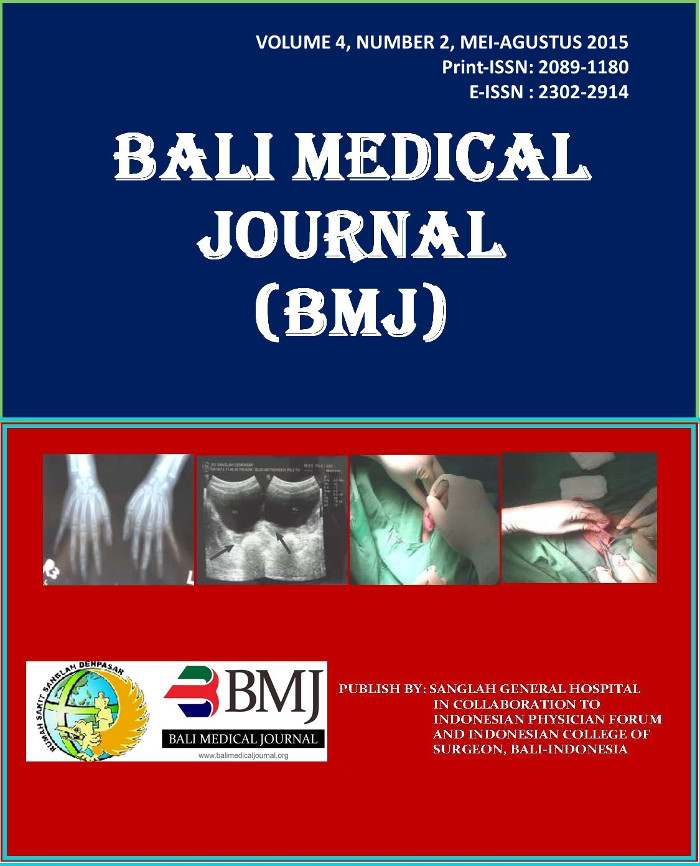EPIDEMIOLOGICAL AND MOLECULAR ANALYSIS OF TOXOPLASMA GONDII IN FAECAL SAMPLES OF CATS OBTAINED FROM HOUSE OF MATERNAL IN BALI
Abstract
Background: toxoplasmosis is a zoonotic-parasite disease caused by T.gondii that spread in many countries. Recently, this disease is one of the major public health problems associated with severe enocomical and social impacts such as miscarriages, hydrocephalus, blindness and mental retardations. The human parastic infection are closely related with the presence of infected cats around their houses, in which the animals are the definitive host releasing the parasites into the environment via their feces. The aim of this research was to determine the correlation between morphological prevalence and molecular detection of T.gondii in cats feces. Methods: detection of molecular was carried out by applying microscopic and a specific polymerase chain reaction (PCR). A case-control study using 40 maternal with positive serology of T. gondii and 40 maternal with negative serology were selected by purposive sampling method. Similarly, 80 faecal sample of cats were also obtained from each house of the women. The major risk factors considered as the important rule for human toxoplasmosis such as age, education, occupation, contact with soil, cat’s age, un-owned cats and oocyst-positive feces were determined by questionnaire. Results: The epidemiological analysis showed that the highest risk factor was oocyst-positive feces (OR= 8.143; p= 0.003), followed by education (OR= 3.414; p=0.045), contact with soil (OR= 2.255; p= 0.073), un -owned cats (OR= 2.25; p= 0.210), age (OR=2.23; p=0.074), occupation (OR= 1.556; p= 0.348) and cat’s age (OR= 1.138; p= 0.799). However, the pregnant women with serologically positive to T. gondii had a very high probability of miscarriages (OR= 18.857; p= 0.0001) compared to whom with serologically negative. Moreover, logistic regression model analysis revealed that only oocyst-positive feces and education contributed a significant factor in causing toxoplasmosis among pregnant women. Microscopic observation of 80 faecal samples indicated that only 14 (17.5%) contained typical oocyst of T. gondii. All of the 8 oocyst of T. gondii positive-faecal samples were further confirmed with PCR, and we found that 4 (50%) were positive. Conclusion: This study concluded that the presence of oocyst-positive feces in the environment in conjuction with education level were considered to play significant contribution to the accident of toxoplamosis in pregnant women.Downloads
Download data is not yet available.
Published
2015-08-11
How to Cite
SUBRATA, I M. et al.
EPIDEMIOLOGICAL AND MOLECULAR ANALYSIS OF TOXOPLASMA GONDII IN FAECAL SAMPLES OF CATS OBTAINED FROM HOUSE OF MATERNAL IN BALI.
BALI MEDICAL JOURNAL, [S.l.], v. 4, n. 2, aug. 2015.
ISSN 2302-2914.
Available at: <https://ojs.unud.ac.id/index.php/bmj/article/view/21703>. Date accessed: 08 jan. 2026.
Issue
Section
Articles
Keywords
Epidemiology; zoonosis; risk factor; Toxoplasma gondii; PCR.


